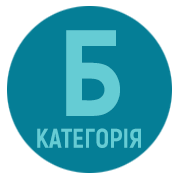Thematic plein airs in the educational process: their importance in the formation of artistic and project competence of future masters of fine arts
DOI:
https://doi.org/10.24195/artstudies.2025-3.10Keywords:
thematic plein airs, masters of fine arts, artistic and project competence, art education, creative search, practical training, aesthetic thinking, professional development, educational technologies.Abstract
The article reveals the unique role of thematic plein airs in the formation of artistic and project competence of future masters of fine arts. Plein air activity appears as an integral element of the professional training of artists, because it is in direct contact with nature, architectural monuments and cultural environment that students develop their ideas about harmony, space and color. The study of thematic plein airs at the Faculty of Art and Graphic Arts of the State Institution “South Ukrainian National Pedagogical University named after K. D. Ushynsky” revealed their important role in the formation of artistic and project competence of master’s degree students. Attention is focused on the importance of the thematic orientation of the creative event and its combination with the form of outdoor work – plein air. The peculiarities of holding thematic plein airs from 2021 to 2025 are shown on specific examples. Consider- able attention is paid to methodological approaches to the organization of thematic plein airs that stimulate the development of aesthetic thinking, creativity, and the ability to adapt artistic knowledge to various project tasks.The role of interdisciplinarity of thematic plein airs, which combine academic knowledge, cre- ative search, practical realization of artistic ideas, and involvement in the independent study of various cultural traditions of the world, is analyzed. It has been found that thematic plein airs contribute to the development of students’ ability to conceptualize and integrate artistic and design approaches. The adaptive function of such events is revealed, during which stu- dents develop teamwork skills, the ability to reflect and adapt to different conditions.The importance of students’ freedom of choice in plein air thematic events in various aspects is shown: the choice of the object of the image, technique and materials, stylistic preferences, which contributes to the development of the courage of creative experimentation, creative initiative, and further – the formation of the definition of their own trajectory of professional artistic development.The study is based on the analysis of modern scientific literature, pedagogical experience and real results of students’ work within thematic plein airs.
References
1. Близнюк, М. (2018). Художньо-проектна діяльність: до питання навчання майбутніх фахівців декоративно-прикладного мистецтва. Збірник наукових праць Кам’янець-Подільського національного університету імені Івана Огієнка. Серія: Педагогічна. 2018. Вип. 24. 138–141. https://doi.org/10.32626/23074507.2018-24.138-141
2. Бойченко, М., Нечипоренко, А. (2024). Змістові засади підготовки майбутніх фахівців візуального мистецтва в закладах вищої освіти США. Південноукраїнські мистецькі студії. Розділ 1. Актуальні проблеми мистецької педагогіки. Вип. 4 (7). 5–10. https://doi.org/10.24195/artstudies.2024-4.1
3. Висікайло, Т. (2017). Формування фахової компетентності майбутніх учителів образотворчого мистецтва у процесі пленерної практики [Автореф. дис. канд. пед. наук]. Полтава.
4. Ірисова весна. Вернісаж open air у пленерному дворику художньо-графічного факультету (2023). URL: https://pdpu.edu.ua/novini-khudozhno-grafichnij-fakultet/10195-irisova-vesna-vernisazh-open-air-u-plenernomu-dvoriku-khudozhno-grafichnogo-fakultetu
5. Ірисовий пленер – 2. ХГФ. ОДЕСА. (2024). URL: https://www.youtube.com/watch?v=YqizHUgMlr4&ab_channel=%D0%A5%D1%83%D0%B4%D0%BE%D0% B6%D0%BD%D1%8C%D0%BE-%D0%B3%D1%80%D0%B0%D1%84%D1%96%D1%87%D0%BD%D0%B8 %D0%B9%D1%84%D0%B0%D0%BA%D1%83%D0%BB%D1%8C%D1%82%D0%B5%D1%82
6. Койчева, Т., Цзяньмей, Шао (2024). Стан підготовки майбутніх учителів образотворчого мистецтва до організації позакласної діяльності на сучасному етапі. Актуальні питання гуманітарних наук. Вип. № 80. Том 1. 306–311. https://doi.org/10.24919/2308-4863/80-1-46
7. Котова, О., Носенко, А., Мунтян, С. (2024). Сучасна творчість студентів художньо-графічного факультету Університету Ушинського: роль пленерного досвіду та натхнення від природи у становленні художників-педагогів. Південноукраїнські мистецькі студії. Розділ 3. Теорія і практика візуальних мистецтв. Вип. 3 (6). 147–155. https://doi.org/10.24195/ artstudies.2024-3.21
8. Купчак, С. (2023). Формування готовності майбутніх учителів початкової школи до застосування проєктної технології у професійній діяльності [Дис. докт. філософ.]. Рівне.
9. Лоза, Н. (2024). Збереження традиції пленеру в системі вищої художньої освіти півдня України. Євроінтеграція в мистецтві, науці та освіті: досвід, перспективи розвитку. Клайпедський університет, Литва (“Eurointegration in art, science and education: experience, development perspectives”, Klaipėda University, Lithuania), 247–250. URL: h t t p s : / / w e b . k u . l t / u p l o a d s / d o c u m e n t s / f i l e s / Konferencijos_tez%C4%97s_2024_03_08.pdf
10. Малік, О., Носенко, А. (2023). Артконкурс «Рожевий бульдозер» – Молодіжні мистецькі змагання в культурному просторі Одеси (2012–2018, 2023 рр.). Український мистецтвознавчий дискурс. (4). 46–56. https://doi.org/10.32782/uad.2023.4.6
11. Маслова, Т., Басанець, Л. (2024). Досвід реалізації навчально-творчого art-проєкту здобувачів художньо-графічного факультету в умовах воєнного стану. Євроінтеграція в мистецтві, науці та освіті: досвід, перспективи розвитку. Клайпедський університет, Литва. (“Eurointegration in art, science and education: experience, development perspectives”, Klaipėda University, Lithuania). 251–255. URL: h t t p s : / / w e b . k u . l t / u p l o a d s / d o c u m e n t s / f i l e s / Konferencijos_tez%C4%97s_2024_03_08.pdf
12. Нарцисовий пленер – 2025. ХГФ. Одеса. (2025). URL: https://www.youtube.com/watch?v=-bek-gHBF6E&ab_channel=%D0%A5%D1%83%D0%B4%D 0%BE%D0%B6%D0%BD%D1%8C%D0%BE-%D0%B3%D1%80%D0%B0%D1%84%D1%96%D1%87%D0% BD%D0%B8%D0%B9%D1%84%D0%B0%D0%BA%D1%83%D0%BB%D1%8C%D1%82%D0%B5%D1%82
13. Носенко, А. (2024). Пленер у живописі Костянтина Ломикіна: трансформація образу від «безпосереднього враження» до «опосередкованого художнього перетворення». Південноукраїнські мистецькі студії. Розділ 3. Теорія і практика візуальних мистецтв. Вип. 2 (5). 184–193. https://doi.org/10.24195/ artstudies.2024-2.31
14. Носенко, А. (2006). Пленер у живописі Одеси другої половини ХХ – початку ХХІ ст. [Автореф. дис. канд. мистецтвозн.]. Харків.
15. ОПП «Образотворче мистецтво. Декоративне мистецтво» на здобуття другого (магістерського) рівня вищої освіти в Університеті Ушинського (2024). URL: https://ftp.pdpu.edu.ua/s/WkyodkakuZyhEgG?path=%2F2024
16. Отич, О. (2009). Мистецтво у системі розвитку творчої індивідуальності майбутнього педагога професійного навчання: теоретичний і методичний аспекти: монографія. Зелена Буковина.
17. Рудой, В., Нагуляк, П. (2024). Пленер як творча практика вивчення образно-кольорового проявлення форм природи. Актуальні питання гуманітарних наук. Вип. 73, том 3, 285–294. https://doi.org/10.24919/2308-4863/73-3-43
18. Тарасенко, О. (2024). Майстри пленерного живопису Одеси: Віктор Жураковський (1928–2001), Павло Македонський (1967). Південноукраїнські мистецькі студії. Розділ 3. Теорія і практика візуальних мистецтв. Вип. 2 (5). 194–198. https://doi.org/10.24195/artstudies.2024-2.32
19. Arnheim, R. (1961). Form and Consumer. Toward a Psychology of Art, Berkeley and Los Angeles.








